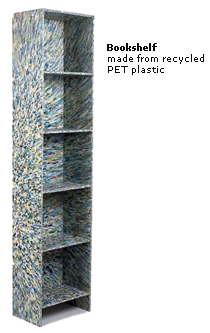DK Science: Recycling
Many things we normally throw away can be recycled (used again), including paper, glass, metals, plastics, and BIODEGRADABLE waste such as vegetable peelings and cut grass. Recycling saves natural resources, such as trees and crude oil. It can also save energy as it often takes less energy to make a product from recycled materials than it does to make the product from new materials. For example, 93 per cent more energy is needed to extract aluminium from ore than to recycle it.
Most rubbish is dumped in big pits called landfill sites. The pits are lined with clay to prevent poisons leaking into the surrounding soil and polluting water supplies. Pipes are inserted into the pit to collect and remove poisonous methane gas. Unless we recycle more, we will run out of places to put landfill sites.
Scrap steel is flattened or shredded, then melted in a furnace. The molten steel is poured into moulds to make slabs of steel called billets. Once solidified, the billets are reheated and rolled into thin sheets.
Steel sheets are used to make a range of products, such as food cans and car parts. Steel is 100 per cent recyclable. This means that recycled steel is exactly the same as the steel in the original material.
Before recycling, paper is sorted into different grades. It is then mashed with water and chemicals to form a pulp. The pulp is cleaned (to remove staples, glue, or ink) and sprayed onto flat screens. When dry, the paper is used to make new products, such as newspapers.
Plastics such as polyethylene terephthalate (PET), used in fizzy drinks bottles, can be recycled. This is because they are a kind of plastic called a thermoplastic. When heated, the plastic melts and can be moulded into a new shape. Only thermoplastics are recyclable. Thermosetting plastics burn rather than melt when heated.
Materials from living things are usually biodegradable. They break down into simpler substances, often with the help of micro-organisms. Leaves biodegrade into compost and carbon dioxide, both of which recycle in our environment. Most plastics are not biodegradable. They are so different from natural materials that micro-organisms cannot digest them.
Making compost is a good way of recycling biodegradable materials that you would otherwise throw away. Vegetable peelings, sawdust, and grass cuttings can all be layered in a large container. Over a few months, micro-organisms will break down the biodegradable waste into compost. This rich, dark material can be scattered over the soil to provide plants with extra nutrients.

